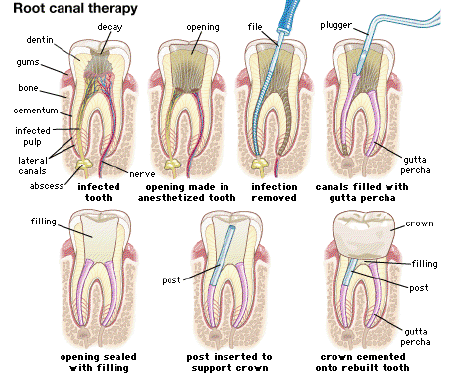Many dentists refer their patients with root canal problems to other professionals, not Dr. Schleiffarth. He has performed literally hundreds of root canals in his practice over the years and his experience with root canal procedures is extensive. Root canals are tiny passageways (between one and four per tooth) that branch off from beneath the top of the tooth, traveling vertically until they reach the tip of the root. Many tooth problems involve infections that spread to the pulp, which is in the inner chamber of the tooth containing blood vessels and nerves. If an infection is not promptly treated, it can begin affecting the root canal and the surrounding jaw. An infected nerve can cause other problems. Pain and sensitivity are some of the first indications of a problem. A spreading infection can cause small pockets of pus to develop, leading to an abscess. A traumatic injury to a tooth often leads to the need for root canal therapy as well.
Dr. Schleiffarth removes the pulp (nerve) entirely, which halts the spread of infection, and then he restores the healthy portion of the tooth. This procedure, designed to save a problem tooth, has a very high rate of success. Before the procedure was developed and gained acceptance, the only alternative for treating an infected tooth was extraction.

